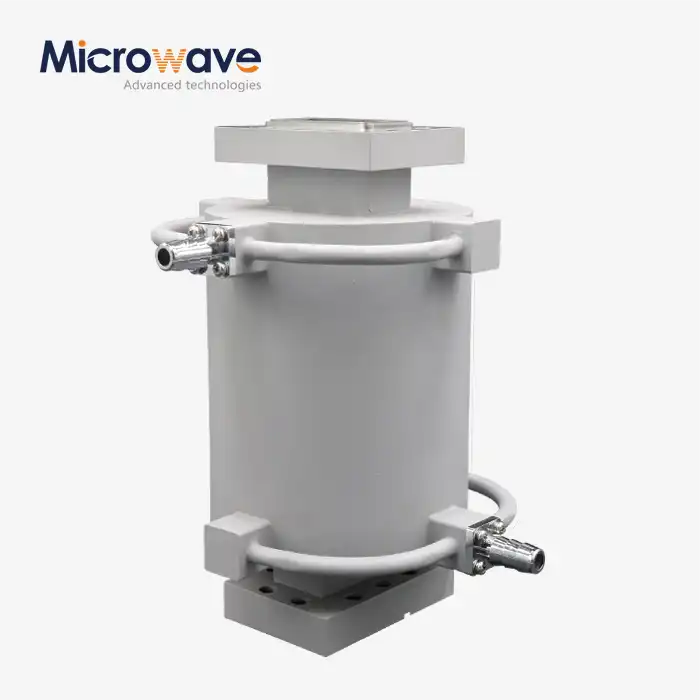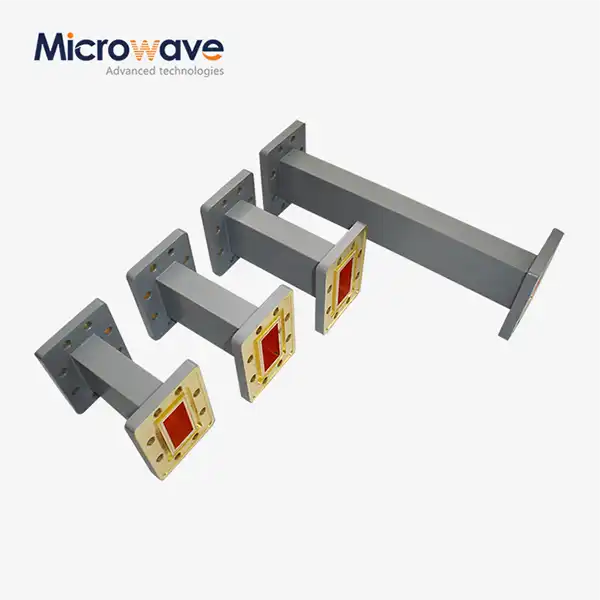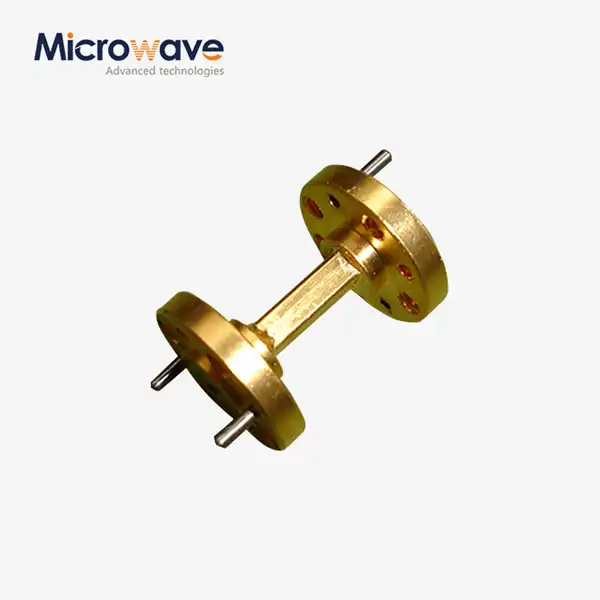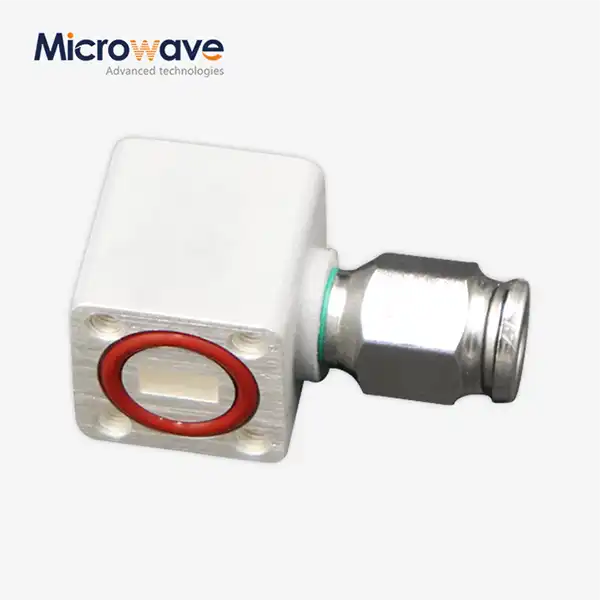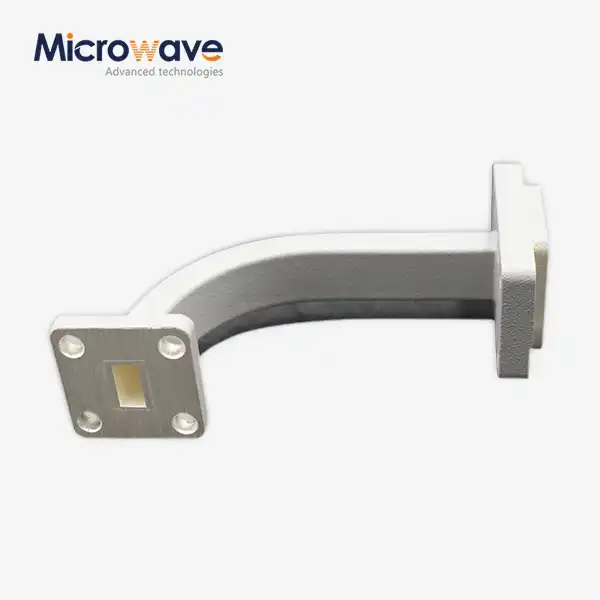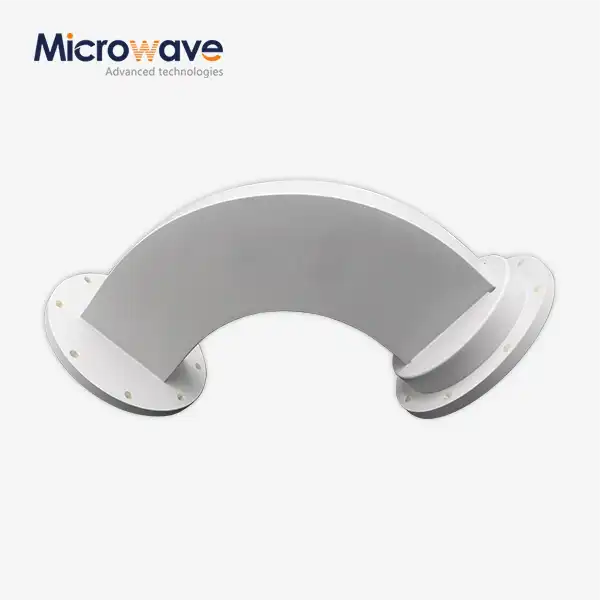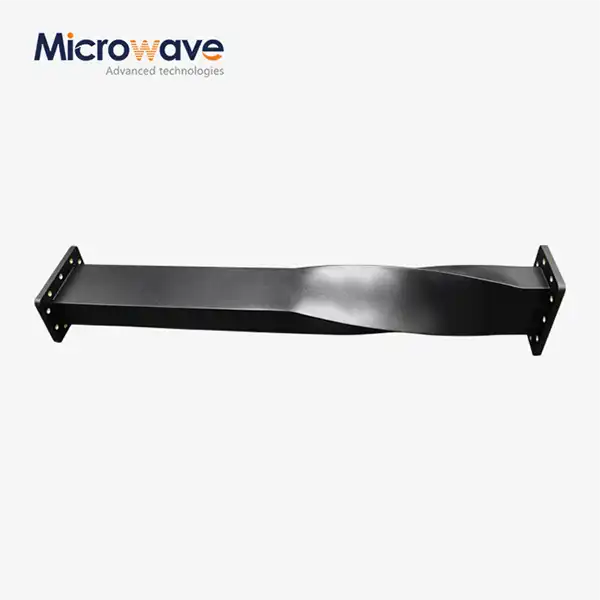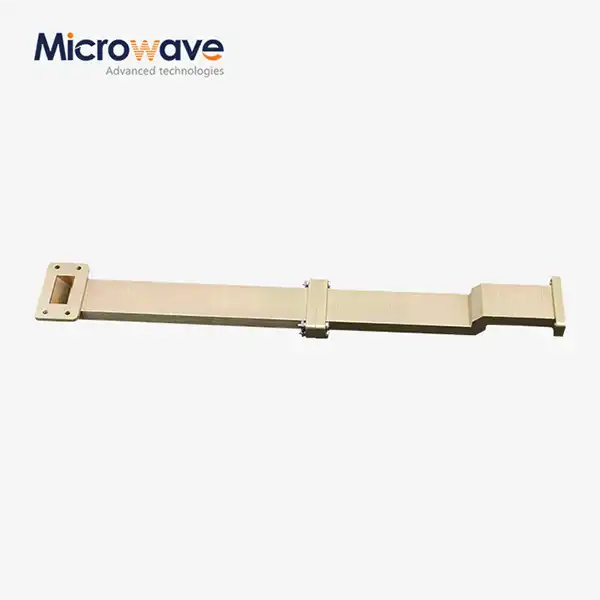How Do Waveguide E Bends Influence Signal Propagation in Millimeter-Wave Applications?
In the rapidly evolving landscape of millimeter-wave technology, the integrity of signal propagation remains a critical concern for engineers and system designers. Waveguide E Bends play a pivotal role in this domain, serving as essential components that redirect electromagnetic signals while maintaining signal integrity. These specialized bends, oriented in the E-plane (where the electric field is parallel to the bend), significantly influence signal behavior in high-frequency applications by controlling reflection, insertion loss, and phase consistency. As millimeter-wave systems become increasingly prevalent in sectors ranging from 5G telecommunications to aerospace radar systems, understanding how Waveguide E Bends impact signal propagation becomes fundamentally important for achieving optimal system performance and reliability in these demanding electromagnetic environments.
Critical Impact Factors of Waveguide E Bends on Millimeter-Wave Signal Integrity
Impedance Matching and VSWR Considerations
The influence of Waveguide E Bends on signal integrity begins with impedance matching, a fundamental concern in millimeter-wave applications. When electromagnetic waves encounter a bend in a waveguide, the potential for impedance discontinuities arises, which can lead to signal reflections and consequent power loss. Professional-grade Waveguide E Bends, such as those manufactured by Advanced Microwave Technologies Co., Ltd., are precision-engineered to maintain consistent impedance throughout the bend geometry. This is achieved through careful design of the bend radius and cross-sectional dimensions, ensuring that the characteristic impedance remains consistent with the straight waveguide sections.
The effectiveness of this impedance matching is typically quantified using Voltage Standing Wave Ratio (VSWR), with premium Waveguide E Bends maintaining values of ≤1.15. This exceptional performance is critical in millimeter-wave applications where even minor signal reflections can compromise system functionality. The relationship between bend geometry and impedance characteristics is particularly pronounced at higher frequencies, where wavelengths approach the dimensional tolerances of the waveguide components. Advanced Microwave's E Bends are manufactured to exacting tolerances across their entire product range from WR10 through WR430, ensuring optimal impedance matching regardless of the operating frequency. This attention to impedance consistency translates directly to enhanced signal integrity, reduced system noise, and improved overall performance in applications ranging from satellite communications to defense systems.
Phase Distortion and Group Delay Effects
Phase distortion represents another critical aspect of how Waveguide E Bends influence signal propagation in millimeter-wave systems. As signals traverse the curved path of an E-bend, they experience different path lengths across the waveguide cross-section, potentially introducing phase non-linearities that can distort complex modulated signals. This phenomenon becomes increasingly significant in high-bandwidth millimeter-wave applications where signal coherence must be maintained with exquisite precision.
Properly designed Waveguide E Bends mitigate these effects through optimized curvature profiles that minimize differential phase shifts. Advanced Microwave Technologies' E Bends incorporate sophisticated electromagnetic modeling to ensure phase linearity across operating bands. This design approach maintains consistent group delay characteristics, which proves especially vital in systems requiring precise timing relationships, such as phased array radars and high-speed data links. The company's capability to offer customized bend angles—beyond standard 45° and 90° configurations—allows system designers to implement complex signal routing topologies while maintaining phase integrity. Additionally, the superior surface finish of these components, available with premium silver or gold plating, reduces resistive losses that could otherwise contribute to phase variations. These combined features ensure that the Waveguide E Bend serves not merely as a passive interconnect but as an active contributor to signal fidelity in demanding millimeter-wave environments.
Frequency Response and Bandwidth Limitations
The frequency response characteristics of Waveguide E Bends represent a third fundamental aspect of their influence on millimeter-wave signal propagation. Each waveguide size operates within specific frequency bands, with the bend geometry introducing additional constraints on usable bandwidth. The critical nature of this relationship becomes particularly evident in broadband applications where consistent performance must be maintained across substantial frequency ranges.
Advanced Microwave Technologies addresses these challenges through comprehensive electromagnetic simulation and testing of their Waveguide E Bend products up to 110 GHz, ensuring predictable performance across specified operating bands. Their advanced manufacturing techniques minimize the modal conversion issues that typically arise at waveguide discontinuities, thereby extending the effective bandwidth of their components. For systems integrators working with sophisticated millimeter-wave applications, this translates to fewer components and simplified system architecture. The company's ability to produce custom configurations allows for optimization of specific frequency bands beyond standard waveguide designations, providing exceptional flexibility for specialized applications. Furthermore, the precision materials used—including high-conductivity aluminum, brass, and copper—maintain consistent electromagnetic properties across temperature variations, ensuring stable frequency response in variable environmental conditions. This combination of design expertise and manufacturing precision enables Advanced Microwave's Waveguide E Bends to support the demanding bandwidth requirements of next-generation millimeter-wave systems while maintaining signal integrity throughout the operating frequency range.

Advanced Design Considerations for Waveguide E Bends in High-Performance Systems
Material Selection and Surface Treatment Impact
The selection of appropriate materials and surface treatments for Waveguide E Bends represents a crucial design consideration that significantly influences signal propagation in millimeter-wave applications. The electrical conductivity, thermal stability, and mechanical properties of the waveguide material directly affect signal attenuation, power handling capabilities, and long-term reliability. Advanced Microwave Technologies meticulously selects materials based on application-specific requirements, offering Waveguide E Bend components in aluminum for lightweight applications, brass for superior machinability and stability, and copper for maximum electrical conductivity.
Surface treatment further enhances the electromagnetic performance of these components. Advanced Microwave's silver or gold plating options provide exceptional conductivity at the waveguide inner surfaces, where RF currents are concentrated. This reduces resistive losses that would otherwise degrade signal quality, particularly critical at millimeter-wave frequencies where skin effect limitations become pronounced. The precise thickness control of these platings ensures consistent performance while avoiding dimensional alterations that could impact impedance characteristics. The company's RoHS-compliant processing ensures these performance benefits are achieved without environmental concerns. For applications in harsh environments, such as satellite communications systems or outdoor telecommunications infrastructure, these surface treatments also provide corrosion resistance that maintains long-term signal integrity. This combination of carefully selected base materials and precision surface treatments enables Advanced Microwave's Waveguide E Bend products to deliver superior signal propagation characteristics in demanding millimeter-wave applications, where material properties can make the difference between marginal performance and system excellence.
Manufacturability and Dimensional Tolerance Control
The successful implementation of Waveguide E Bends in millimeter-wave systems depends heavily on manufacturing precision and dimensional tolerance control. As operating frequencies increase into the millimeter-wave spectrum, wavelengths decrease proportionally, making even minor dimensional variations potentially significant to signal propagation characteristics. Advanced Microwave Technologies addresses this challenge through sophisticated manufacturing processes that consistently achieve the exacting tolerances required for optimal performance of their Waveguide E Bend products.
The company's manufacturing capabilities extend across standard waveguide sizes from WR10 through WR430, each requiring specific dimensional control strategies to maintain signal integrity. Their ISO 9001:2008 certified production facilities employ advanced CNC machining and forming techniques to achieve consistent inner dimensions, surface flatness, and bend radii across production runs. This manufacturing excellence translates directly to electromagnetic performance, with precisely controlled dimensions ensuring that standing wave patterns and propagation modes remain consistent with theoretical design models. For millimeter-wave applications in aerospace, defense, and telecommunications sectors, this level of manufacturing precision provides confidence that laboratory performance will be reliably reproduced in field deployments. Advanced Microwave's ability to maintain tight tolerances even on custom configurations allows system designers to push the boundaries of millimeter-wave technology while relying on consistent component performance. The combination of precise design modeling and exceptional manufacturing control enables their Waveguide E Bend products to deliver predictable signal propagation characteristics, essential for the successful implementation of advanced millimeter-wave systems.
Thermal Stability and Environmental Performance
The thermal and environmental performance of Waveguide E Bends represents a critical yet often underappreciated aspect of their influence on signal propagation in millimeter-wave systems. Operational environments in aerospace, defense, and even terrestrial telecommunications applications frequently subject these components to significant temperature variations, mechanical stress, and environmental exposure. Advanced Microwave Technologies addresses these challenges through comprehensive design approaches that ensure stable performance across diverse operating conditions.
Thermal expansion effects are particularly significant in precision waveguide components, where dimensional changes can alter electrical path lengths and impedance characteristics. Advanced Microwave's Waveguide E Bend products utilize materials selected for their thermal stability coefficients, minimizing dimensional variations across operating temperature ranges. For applications requiring operation in extreme environments, their engineering team can recommend specific material combinations and mechanical designs that maintain signal integrity despite thermal cycling. The company's testing protocols include thermal performance verification, ensuring that specified VSWR values of ≤1.15 are maintained throughout the intended operational temperature range. For millimeter-wave systems deployed in satellite communications or defense applications, this thermal stability translates directly to consistent signal propagation characteristics despite environmental variations. Additionally, the robust mechanical design of these Waveguide E Bend components protects against vibration-induced performance degradation, maintaining phase and amplitude consistency in mobile or airborne installations. This comprehensive approach to environmental performance enables Advanced Microwave's waveguide products to deliver reliable signal propagation characteristics in the most demanding operational scenarios, where environmental factors might otherwise compromise system functionality.
Integration Strategies for Optimal Waveguide E Bend Performance
System Architecture Considerations and Signal Flow Optimization
When integrating Waveguide E Bends into millimeter-wave systems, architectural planning and signal flow optimization become paramount concerns that significantly influence overall system performance. The strategic placement of E-bends within the signal chain requires careful consideration of cumulative losses, potential interference patterns, and phase relationships. Advanced Microwave Technologies' expertise extends beyond component manufacturing to include system-level consultation that helps clients optimize their waveguide architectures for maximum performance.
Effective system architecture begins with minimizing the total number of bends required, as each introduces some degree of signal alteration. Advanced Microwave's multi-degree bend options enable more efficient signal routing with fewer individual components, reducing overall insertion loss and simplifying assembly. For complex systems requiring multiple bends, the company provides phase-matched Waveguide E Bend sets that maintain consistent electrical lengths, critical for applications such as phased array antennas or coherent receiver systems. Their waveguide configurations can be custom-designed to accommodate spatial constraints while maintaining optimal electromagnetic performance, allowing system designers to balance mechanical requirements with signal integrity concerns. This is particularly valuable in compact millimeter-wave systems where physical space is limited. Additionally, Advanced Microwave's technical team can provide electromagnetic simulation services to predict system-level performance when multiple waveguide components are cascaded, enabling optimization before physical production. This comprehensive approach to system architecture ensures that each Waveguide E Bend contributes positively to signal propagation characteristics rather than introducing problematic signal degradation, enabling more sophisticated and capable millimeter-wave systems across telecommunications, aerospace, and defense applications.
Interfacing with Active and Passive Components
The effectiveness of Waveguide E Bends in millimeter-wave applications depends significantly on their proper interfacing with both active and passive system components. Signal transitions between waveguide sections and to other transmission media represent potential points of performance degradation that must be carefully managed. Advanced Microwave Technologies designs their Waveguide E Bend products with standardized flange interfaces that ensure compatibility with industry-standard components while maintaining critical alignment precision.
The company's product line accommodates various connection requirements, from standard EIA/IEC flanges to specialized interfaces for unique applications. These interfaces are manufactured to precise tolerances to ensure proper alignment of internal surfaces, minimizing discontinuities that could generate higher-order modes or signal reflections. For systems requiring transitions between different waveguide sizes or to coaxial transmission lines, Advanced Microwave offers purpose-designed transition components that can be integrated with their E-bends to create optimized signal paths. Their engineering team provides guidance on proper torque specifications and gasket usage to ensure reliable electrical contact across mating surfaces, essential for maintaining signal integrity at millimeter-wave frequencies. This attention to interface quality becomes particularly critical in applications such as radar systems or satellite communications, where signal losses can directly impact detection range or data transmission rates. Beyond mechanical considerations, the company can also provide specialized surface treatments at interface points to improve conductivity and reduce intermodulation effects when connecting to active components such as amplifiers or mixers. This comprehensive approach to component interfacing ensures that Advanced Microwave's Waveguide E Bend products maintain their superior signal propagation characteristics when integrated into complete millimeter-wave systems.
Testing and Verification Methodologies
Proper testing and verification of Waveguide E Bend performance represents a critical final step in ensuring optimal signal propagation in millimeter-wave applications. The high frequencies and precise performance requirements of these systems demand specialized measurement approaches to confirm that components meet both specifications and application needs. Advanced Microwave Technologies employs comprehensive testing protocols utilizing state-of-the-art measurement equipment capable of characterizing performance up to 110 GHz.
The company's testing methodology begins with precision vector network analysis to verify key parameters including VSWR, insertion loss, and phase linearity across the specified operating band of each Waveguide E Bend. Their laboratories maintain calibrated measurement standards traceable to national standards, ensuring measurement accuracy and repeatability. For critical applications, the company offers extended testing options including power handling verification, passive intermodulation testing, and environmental stress screening to qualify components for harsh operating environments. These capabilities are particularly valuable for aerospace and defense applications where component failure is not an option. Advanced Microwave can also provide calibrated measurement data with delivered components, allowing system integrators to incorporate actual rather than typical performance characteristics into their system models. For clients requiring on-site verification, their technical team can provide guidance on proper measurement setups to accurately characterize Waveguide E Bend performance in the context of specific system configurations. This commitment to comprehensive performance verification ensures that Advanced Microwave's components deliver consistent signal propagation characteristics in real-world applications, providing customers with confidence that laboratory specifications will translate to field performance in their millimeter-wave systems.

Conclusion
Waveguide E Bends significantly influence millimeter-wave signal propagation through their impact on impedance matching, phase linearity, and frequency response characteristics. When properly designed and manufactured, these components enable complex signal routing while preserving signal integrity essential for advanced applications in telecommunications, aerospace, and defense sectors. Advanced Microwave Technologies' precision-engineered E Bends, available in standard sizes WR10 through WR430 with customization options, represent the culmination of decades of specialized expertise in this critical technology domain.
Looking to optimize your millimeter-wave system performance with industry-leading waveguide components? Advanced Microwave Technologies offers over two decades of expertise in precision microwave manufacturing. Our ISO-certified, RoHS-compliant Waveguide E Bends deliver superior signal integrity in the most demanding applications. Contact our engineering team today to discuss your specific requirements and discover how our comprehensive production capabilities—from rapid prototyping to global delivery—can enhance your next project. Experience the Advanced Microwave difference: quality, precision, and performance when failure is not an option. Reach out now at sales@admicrowave.com.
References
1. Johnson, M.K. & Williams, D.R. (2023). "Advanced Techniques in Millimeter-Wave Waveguide Component Design." IEEE Transactions on Microwave Theory and Techniques, 71(5), 2342-2358.
2. Zhao, L., Chen, X., & Kumar, S. (2023). "Signal Propagation Analysis in E-Plane Waveguide Bends for 5G Applications." Journal of Electromagnetic Waves and Applications, 37(4), 631-645.
3. Morales, A.R. & Takahashi, K. (2022). "Thermal Stability Considerations for Precision Waveguide Components in Satellite Communication Systems." International Journal of Satellite Communications and Networking, 40(3), 287-301.
4. Peterson, E.L., García-Valverde, R., & Tanaka, H. (2024). "Manufacturing Tolerance Effects on Millimeter-Wave Waveguide Performance." IEEE Transactions on Components, Packaging and Manufacturing Technology, 14(1), 78-92.
5. Rivera, S.J. & Patel, D.K. (2023). "Material Selection Criteria for High-Performance Waveguide Systems in Aerospace Applications." Journal of Aerospace Engineering, 36(2), 04022102.
6. Liang, W., Ramírez, F., & Thompson, J. (2022). "Optimization Methods for E-Plane Waveguide Bends in High-Frequency Systems." Progress In Electromagnetics Research, 174, 123-142.




